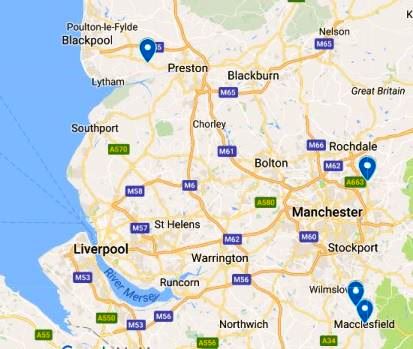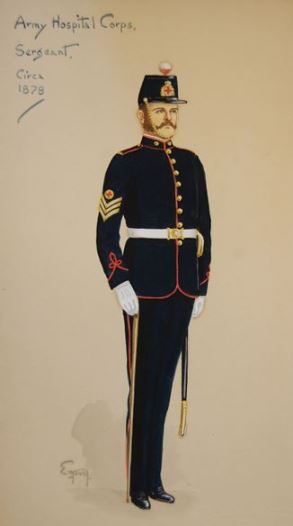isaac malandain + jane cook
Isaac was born on Sclater Street in Bethnal Green on 22 June 1821, to Isaac Malandain and Jane Middleton, and baptised at St Matthew on 15 July 1829. He apprenticed as a Silk Weaver and one year after he completed his seven year term, he married Elizabeth Frederick at St Philip in Bethnal Green. They had two children but while Isaac was imprisoned at Coldbath Fields, both his wife and their infant daughter died.
Isaac’s movements following his release from prison in October 1849 are not clear but by 1852, he had moved to the north west of England and settled in Macclesfield in Cheshire. It is not known why Isaac chose to move so far away but he may have wanted a fresh start following his time in prison and at the time, Macclesfield was known as the main production centre of finished silk with over 5000 weavers employed in more than 70 mills.
On 25 April 1852, Isaac married Jane Cook at St Peter in Prestbury, a small village several miles north of the town of Macclesfield. Twenty-three year old Jane was the daughter of Isaac Cook who also worked as a Weaver but her family has not been traced prior to her marriage. The only possible match in the 1851 Census is for a Jane Cook, born in Chester and lodging in Preston, Lancashire with her two year old son, John. Jane was working as a Shoe Binder and living with John Rose, a Journeyman Shoe Maker, and his 10 year old son; Jane was listed as unmarried while John was married but his wife was not listed in the household. But this was some distance from Jane’s home in Macclesfield and John Cook does not appear in any subsequent censuses with Jane so there are doubts as to whether this is our Jane Cook.
Isaac and Jane were living at at 2 Lamb Lane in Newton, Lancashire when their first son Alfred was born on 17 January 1853. Isaac was still working as a Silk Weaver and when he registered his son’s birth, he used the spelling Malandain. Newton was a township in western Lancashire approximately 7 miles west of Preston. A description of Newton appears in the Imperial Gazeteer of England in 1870 - 72:
NEWTON, a township, conjoint with Scales, in Kirkham parish, Lancashire; on the river Ribble, and adjacent to the Preston and Wyre railway, 1¼ mile E S E of Kirkham. Acres, 1, 525; of which 295 are water. Real property, £2, 647. Pop., 286. Houses, 62. The property is subdivided. A blue-coat school, for maintaining, clothing, and educating poor native boys and girls, was founded here in 1707, by John Hornbie; was re-built in 1864; and has an endowed income of about £600.
On 24 November 1855, Isaac enlisted in the army at Oldham, Lancashire as a Private and was attested to the 2nd Regiment of Foot. His enlistment papers record that he was 29 years and 4 months old when he was in fact five years older than his stated age. With work as a silk weaver increasingly hard to find, he may have chosen the army as a source of a steady income and guaranteed employment.
He was promoted to the rank of Corporal on 13 December 1859 and less than a year later, on 28 August, he was promoted to Sergeant. Although the locations of his postings are not noted in his military file, he was posted to the military barracks in Walmer, Kent where their daughter Emma Jane was born on 20 November 1860. She was also registered under the spelling Malandain and Isaac’s occupation was listed as Sergeant 1st Battalion 2nd Queens. The barracks at Walmer were used as a joint depot by a number of regiments including the 2nd Queens.
Isaac was transferred to the Army Hospital Corps on 1 April 1861. Following the Crimean War, military hospitals came under scrutiny and the army committed to improving the organization of the hospitals, the transport of prisoners to and from, and the treatment of wounded soldiers. In response to the criticism, they created the Army Hospital Corps in 1857 and one of its aims was to provide trained orderlies for military hospitals who were responsible for nursing the sick, cleaning the wards and ensuring the patients were well cared for.
Isaac and Jane were still living in Walmer when daughter Mary Isobella was born in 1863 but by 1865, they had moved to Fort Pitt in Rochester, Kent where son Walter John was born on 27 February. Mary was registered under Malandain but Walter’s birth registration marks the first use of the spelling Mallandaine. Isaac was listed as a Sergeant Army Hospital Corps on Walter’s birth registraion and six months later he re-enslisted for his second engagement with the army.
On 8 May 1866, Isaac was admitted to the Old Brompton Kent Freemason’s Lodge and the register notes that he was living at the Chatham Barracks. He paid his dues for two years until he was withdrawn in June 1868.
Their fifth child, William Thomas, was born at Medway in Kent in the early months of 1867 but once again he was registered under the usual family spelling, Malandain. Within two years of William’s birth, Isaac was transferred to the island of New Providence in the Bahamas and it appears his family travelled with him.
Isaac appears in the Freemason Register for the Royal Victoria Lodge in Nassau on 5 March 1869 and it notes that he transferred from another lodge and worked as a Hospital Steward. On 29 August, Jane died of Yellow Fever and was buried at Christ Church Cathedral in Nassau. Yellow Fever is caused by a bite from an infected mosquito and most commonly results in symptoms such as fever, vomitting, muscle pain and fatigue but in some cases, it causes a second phase that results in liver damage, internal bleeding and ultimately death.
Shortly after Jane’s death, Isaac married a third time to Caroline Keane, nee North, a widow with one young son.

